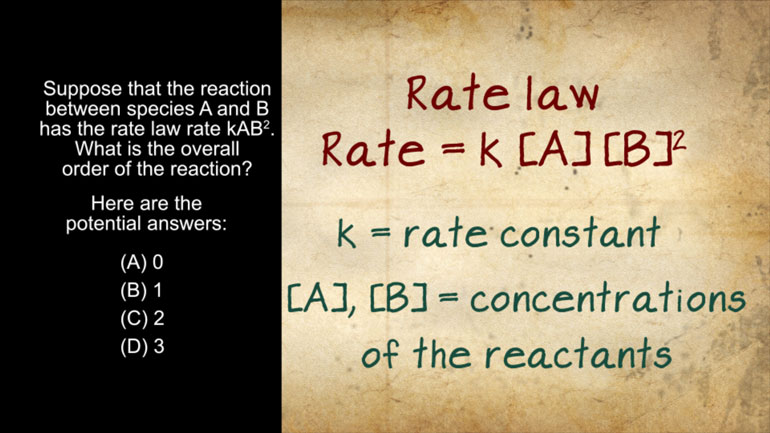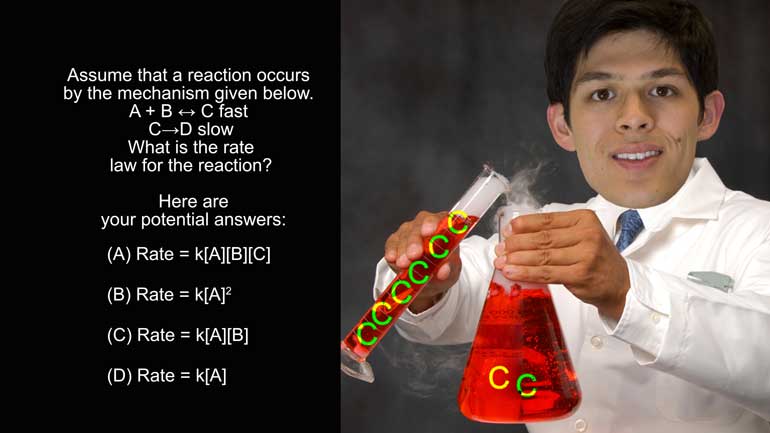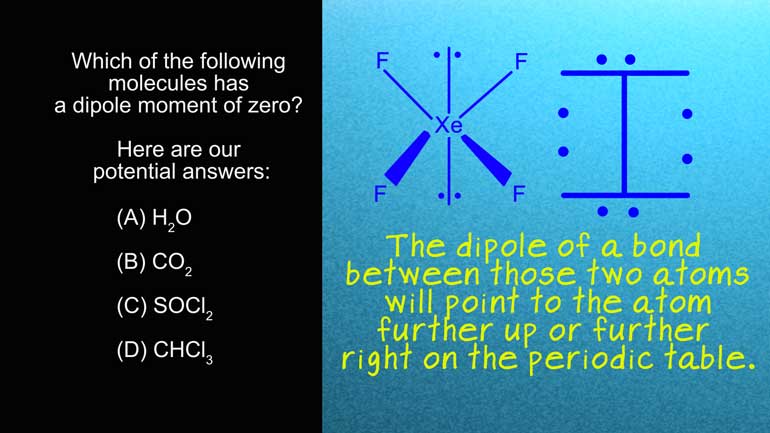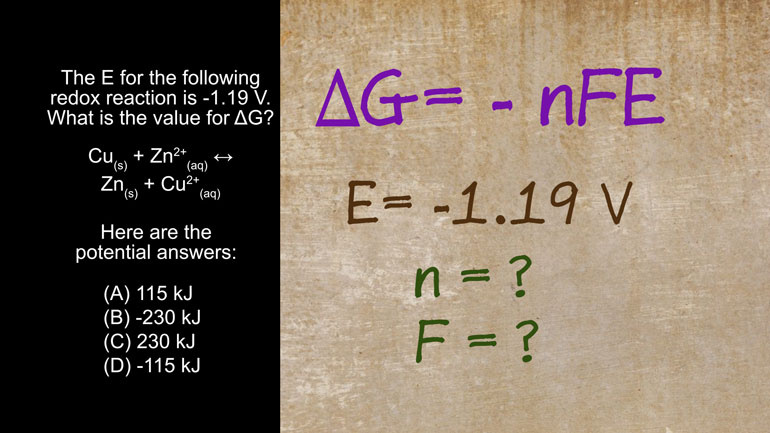ShmoopTube
Where Monty Python meets your 10th grade teacher.
Search Thousands of Shmoop Videos
AP Chemistry 2.2 Laws of Thermodynamics 30 Views
Share It!
Description:
AP Chemistry 2.2 Laws of Thermodynamics. What is the ΔG and the spontaneity of the reacton?
Transcript
- 00:04
And here's your Shmoop du jour, brought to you by spontaneity.
- 00:07
Otherwise known as why we're not going to finish this Shmoop du jour. [Shmoop employee at a desk and disappears]
- 00:10
We're going to Mexico, instead.
- 00:11
Vamos! [Car driving to Mexico]
- 00:12
Okay…maybe our spontaneous trip can wait.
Full Transcript
- 00:16
Here's our question.
- 00:17
Consider the following reaction…right here…
- 00:19
Done checking it out?
- 00:21
Okay, moving right along…
- 00:23
The enthalpy of formation for the reaction is -92.0 kJ, and the change in
- 00:29
entropy is -55.4 J/K at 30 °C. What is the DeltaG of the reaction, and
- 00:37
what is the spontaneity of the reaction, respectively?
- 00:40
And here are your potential answers. [Potential answers to the reaction]
- 00:43
So we’re given a few different pieces of information in this problem. [Puzzle pieces separated]
- 00:48
We’ve got values for the enthalpy or heat of formation,..
- 00:51
…the entropy change,..
- 00:52
…and the temperature.
- 00:53
And we’re asked for the ?G, or the change in Gibbs free energy.
- 00:57
And no, by free energy, we don’t mean a blow-out sale on Red Bull. [Girl shopping for packs of Red Bull]
- 01:02
The Gibbs free energy tells us about the spontaneity of a reaction.
- 01:06
We need to know the value, and specifically the sign, of DeltaG.
- 01:11
We define DeltaG using the Gibbs free energy equation, DeltaG=DeltaH-T DeltaS
- 01:16
Anybody else craving alphabet soup? [Dinner lady serves boy alphabet soup]
- 01:20
We have values for all of the variables on the right hand side of this expression.
- 01:24
But before we plug them in, we have to consider their units.
- 01:27
There’s a few sneaky little guys that we need to convert before we plug them in, plug [Person plugs B into a wall socket]
- 01:31
them in.
- 01:33
The answer needs to be in kilojoules, so first convert DeltaS to kilojoules by multiplying
- 01:37
by the number of kilojoules in a joule.
- 01:40
And let’s not forget about temperature — DeltaS includes a kelvin unit and our given
- 01:45
temperature is in Celsius.
- 01:47
The kelvin scale is an absolute scale––it has a value of zero at absolute zero––so [Woman stood on a weighing scale]
- 01:53
we typically choose to use Kelvin in our equations.
- 01:55
Are we sure that’s better?
- 01:58
Absolutely.
- 01:59
Converting our temperature units, we find that our temperature is 303.15 Kelvin.
- 02:03
Now we just have to do the math…
- 02:04
Chugga-chugga-chugga, bing-bang-boom, and…
- 02:06
DeltaG= -75.2 kJ [Answer for the reaction]
- 02:12
Looking again at our choices, we see that choice D is what we want.
- 02:15
But we’re not done yet!
- 02:17
Is this reaction actually spontaneous? [Couple talking beside a stream]
- 02:20
Spontaneity depends on the sign of DeltaG
- 02:22
A negative DeltaG, a change in Gibbs free energy means energy is released and a reaction is
- 02:28
spontaneous, and a positive DeltaG means energy is added and
- 02:32
the reaction is not spontaneous.
- 02:35
So the negative DeltaG we calculated does correspond to a spontaneous reaction.
- 02:39
High five. [Boy holding out a hand for a high five]
- 02:40
Seriously.
- 02:41
Slap your screen. [Person slaps boys hand for high five]
- 02:42
Don't leave us hanging…
- 02:43
Now come on!
- 02:44
Mexico awaits!
- 02:45
…No?
- 02:46
You guys have responsibilities?
- 02:47
Drat.
- 02:48
Spontaneity looked awfully good in the movies… [Car spontaneously drives to Mexico]
Up Next
AP Chemistry 1.3 Chemical Reaction Rates. What is the overall order of the reaction?
Related Videos
AP Chemistry 1.4 Chemical Reaction Rates. What are the correct units for a second order rate constant?
AP Chemistry 1.5 Chemical Reaction Rates. What is the rate law for the reaction?
AP Chemistry 3.2 Laws of Thermodynamics. What is the value for ΔG?




